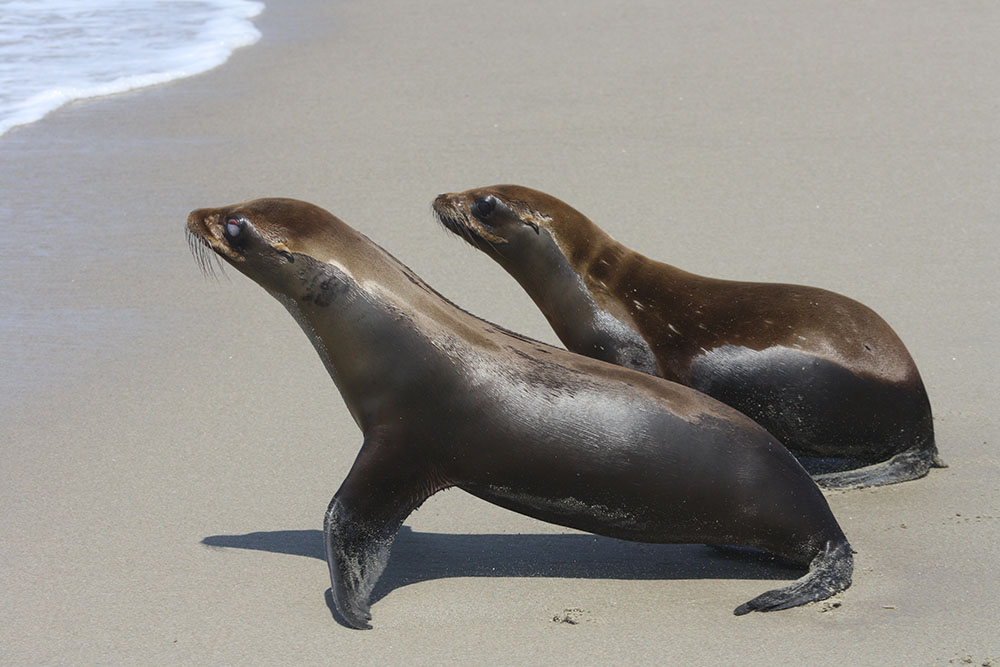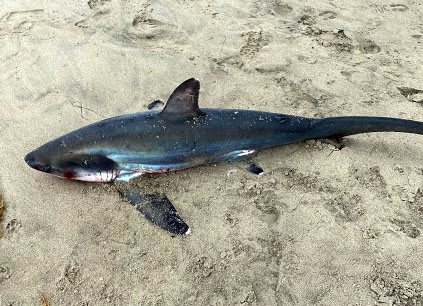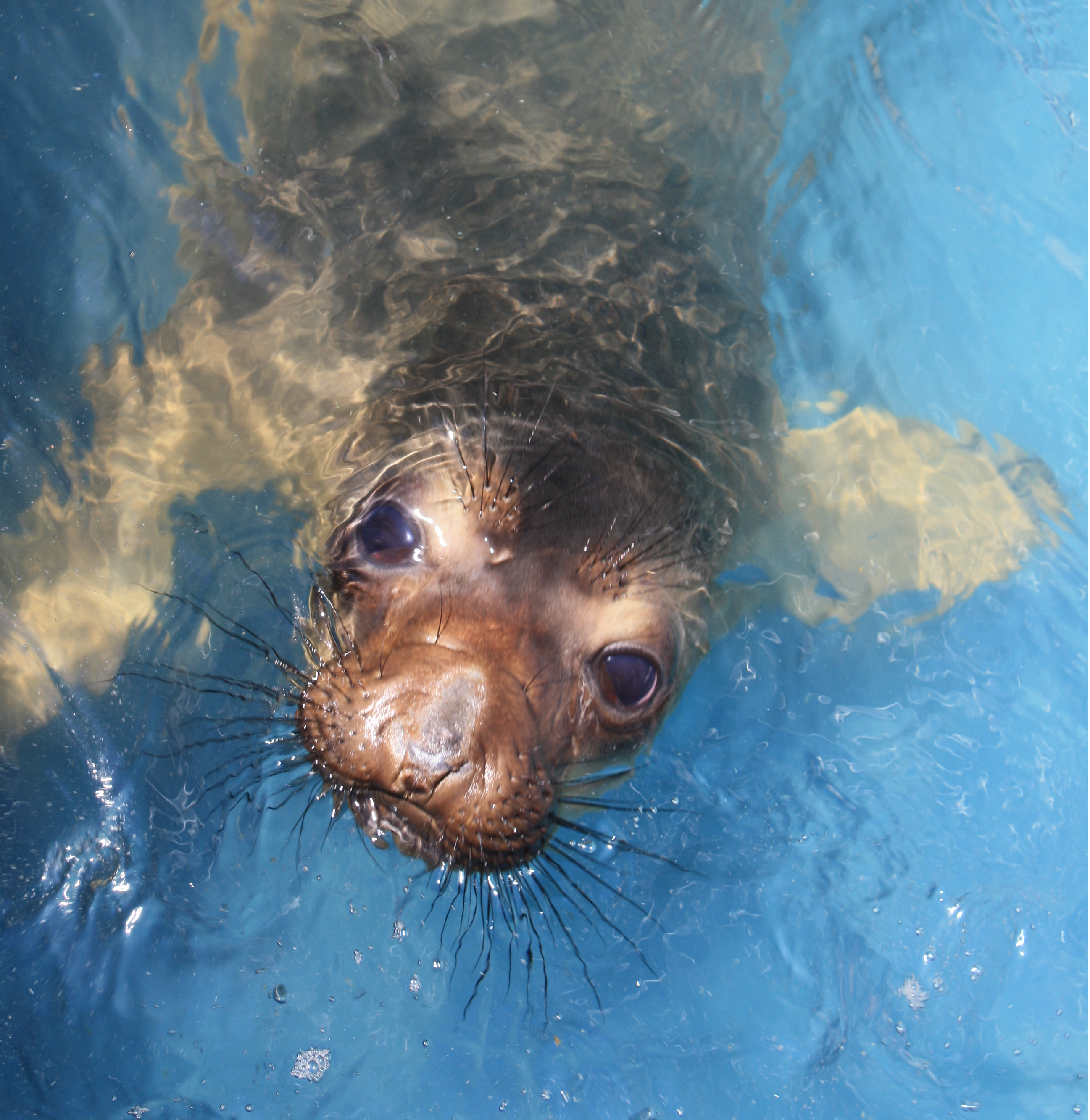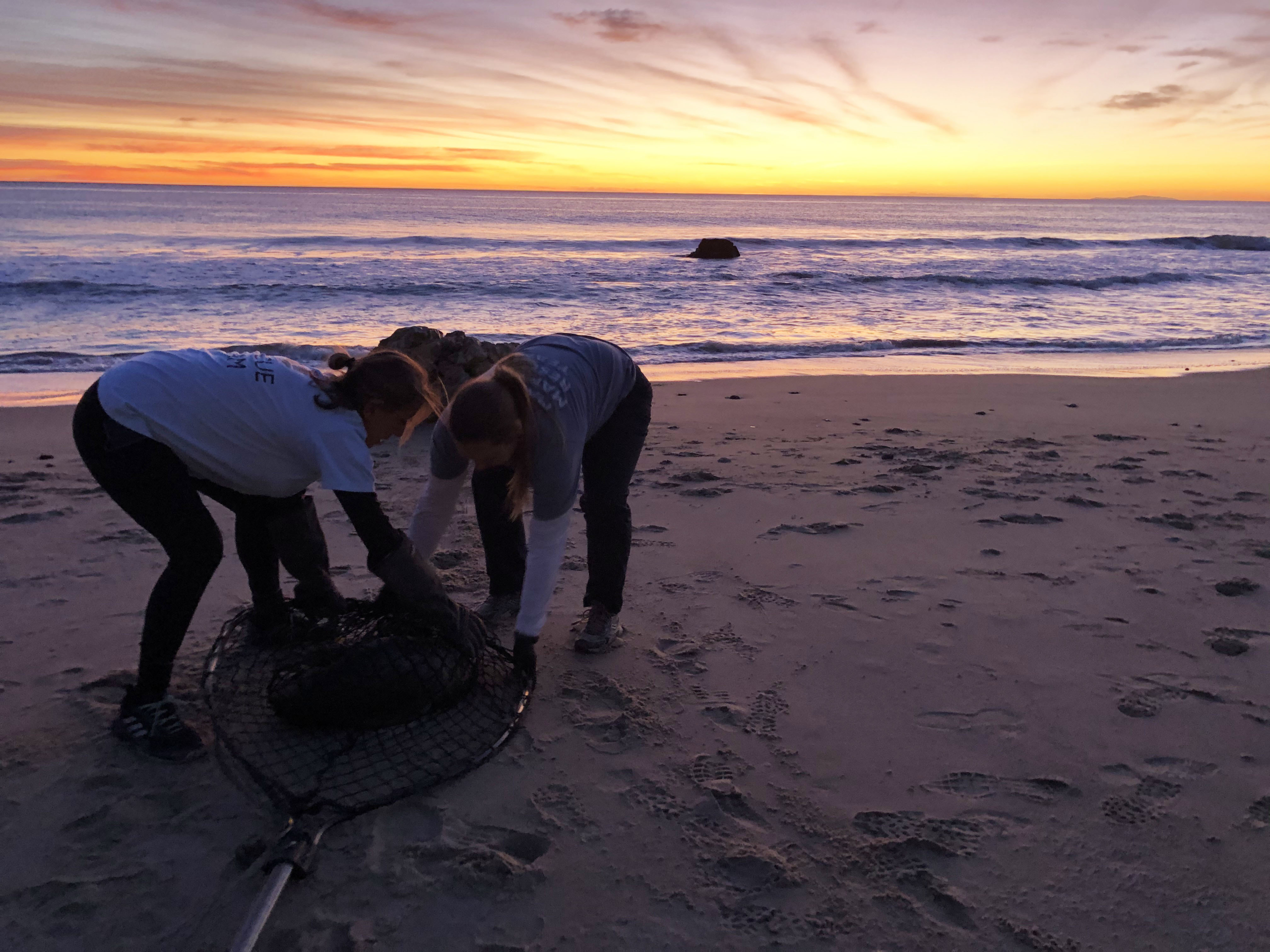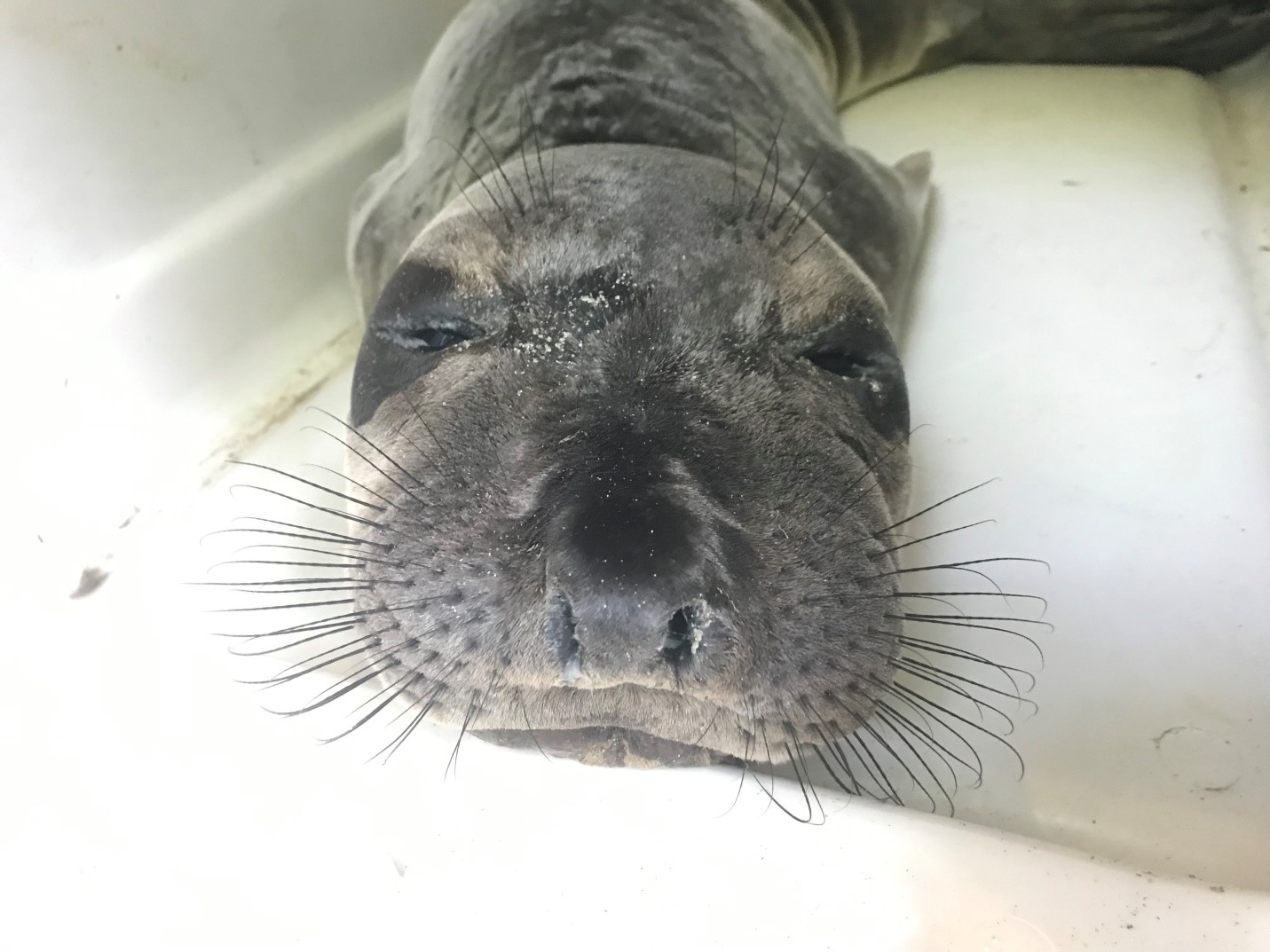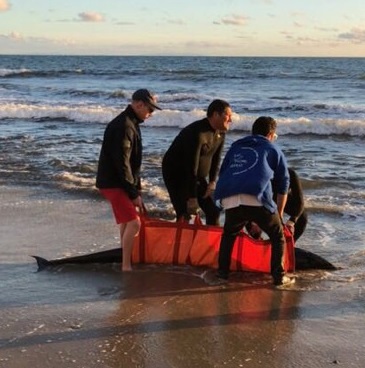Seal Pup’s Remarkable Recovery
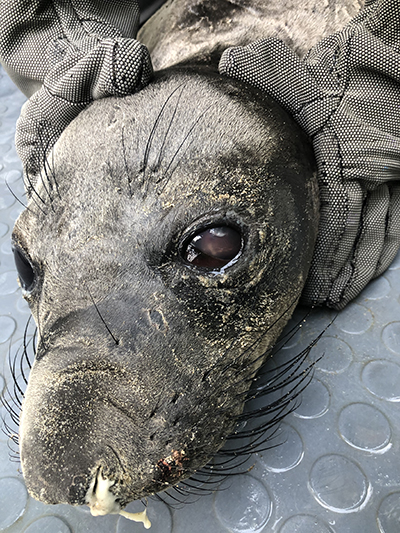
Elephant Seal pup before, Photo by Annika Galloway
On March 25, 2021 the Marine Mammal team headed to Leo Carrillo beach in Malibu following the report of a sickly Northern Elephant Seal pup. The reporting party first spotted the animal as the sun was setting the night prior and was so concerned about the animal that he returned the next morning to find the pup in the same place high up on the beach rocks. When our rescue team arrived, they found a severely dehydrated, malnourished and injured three-month-old female Northern Elephant Seal pup. She had tar patches over approximately 10% of her body, a bloody muzzle, and an injured left eye.

Elephant Seal pup after,
Photo by Annika Galloway
During the injured Elephant seal’s intake exam, she weighed 35kg (approximately birth weight) although she was three months old. Along with an overall poor body condition, the highest concern was lack of movement of the inner left eyelid, which functions to remove surface debris from the eye. Additionally, the eye coloration was severely cloudy with a red hue deep in the tissue base, which could have represented an infection behind the eye. If uncontrolled, there is a risk of infection spreading throughout the body. In cases like these, removal of the eye is a consideration if we were not able to control the spread of the infection. Northern Elephant Seals forage both by sight and feel. Particularly at depth, these extremely sensitive vibrissae (whiskers) sense remote movements in the water and take over for vision while foraging, so while two perfect eyes are best, the seals can be successful with only one.
After three-weeks in care, our patient had responded so well to medical and nutritional care that we were able to discontinue antibiotic treatments and move her into a pool to work on self-feeding whole herring. Now after two months of supportive care, she has mastered eating underwater, is approaching a healthy release weight, and most exciting, the left eye infection resolved leaving only a small corneal scar with regained vision. Elephant seal pup #21-041 should return to her ocean home in early June!


